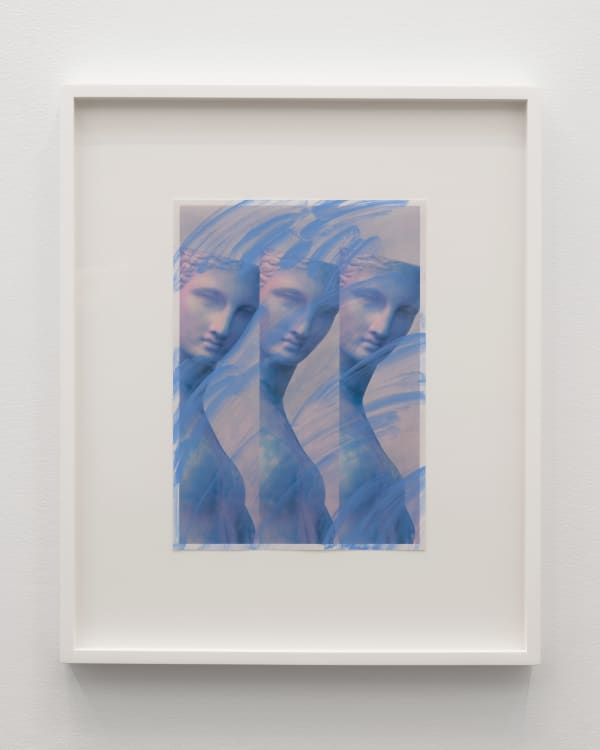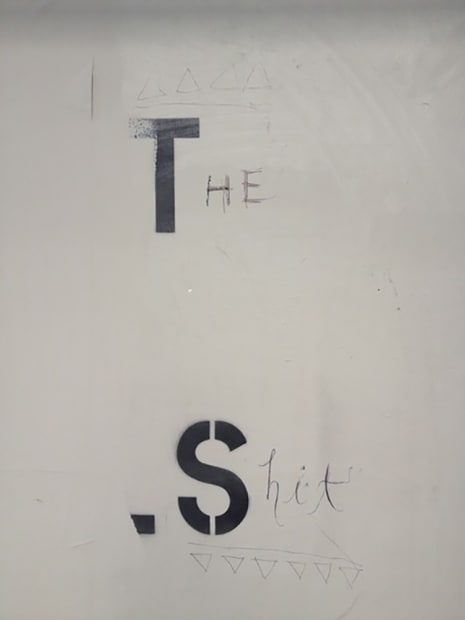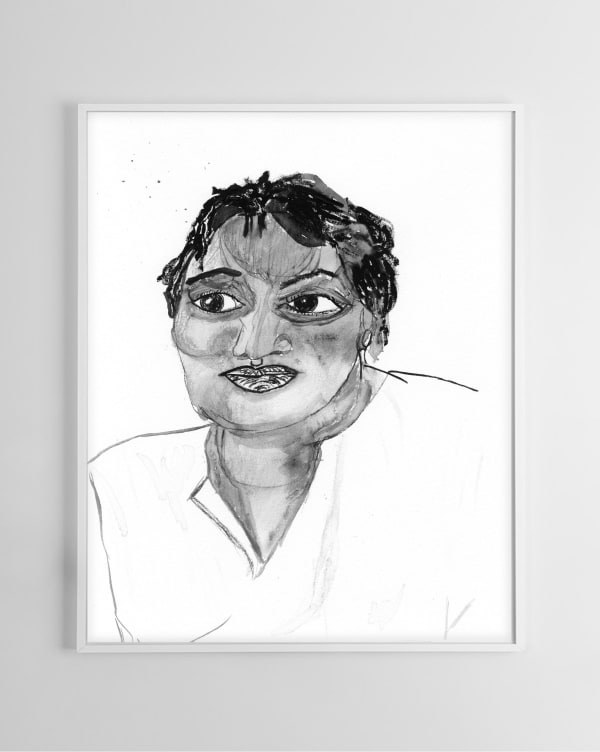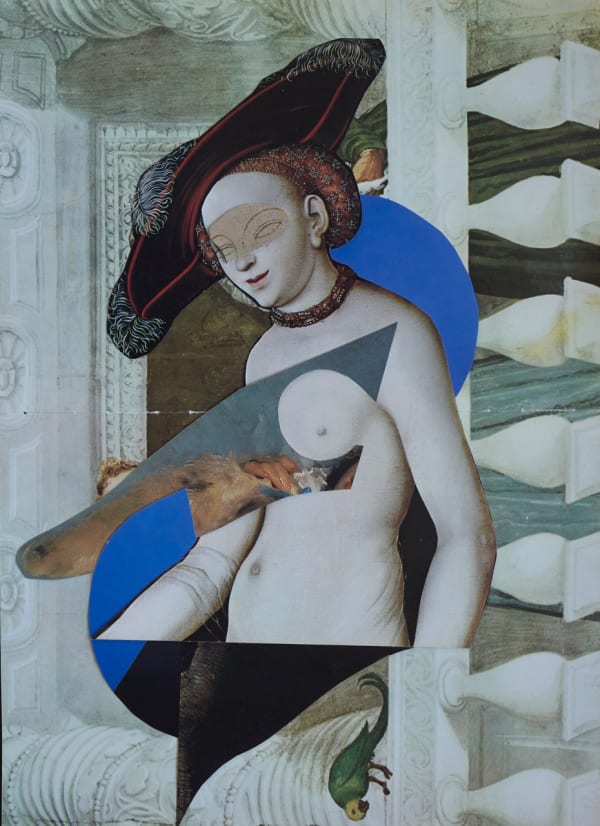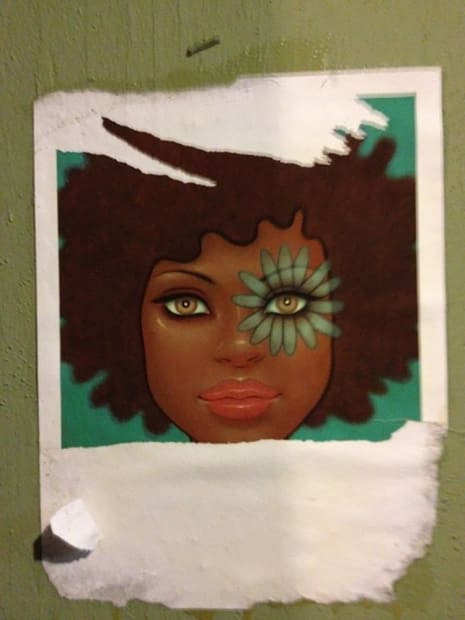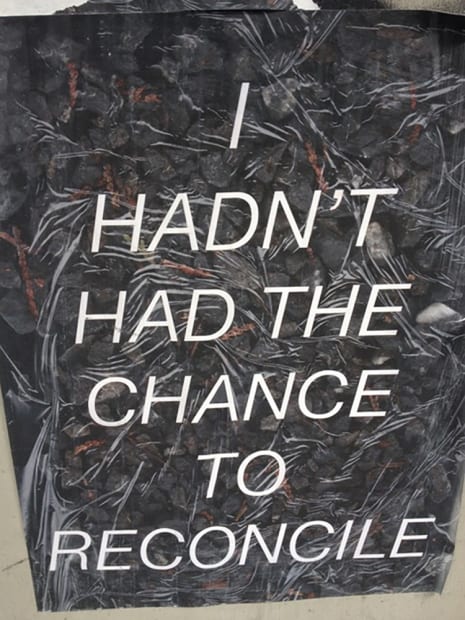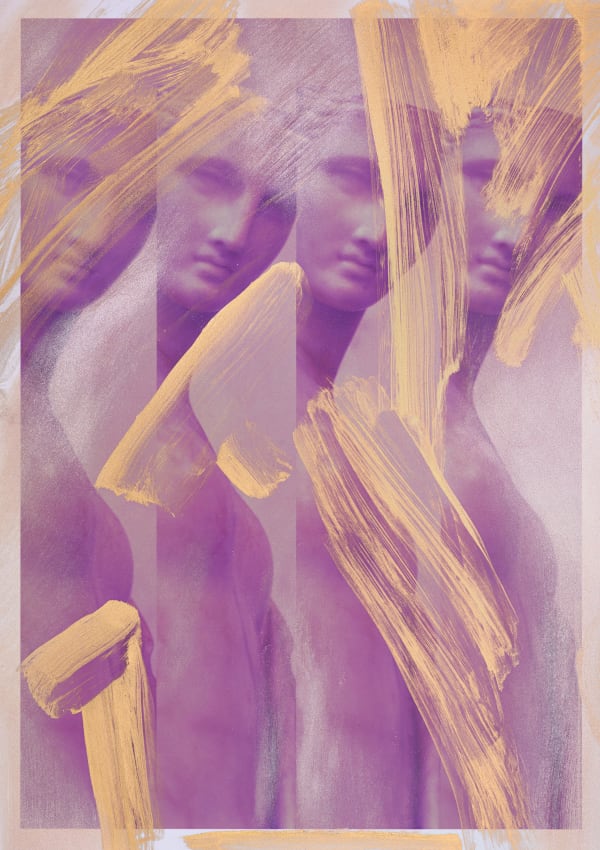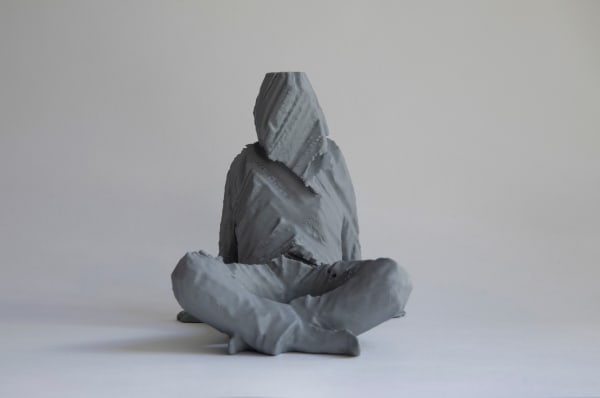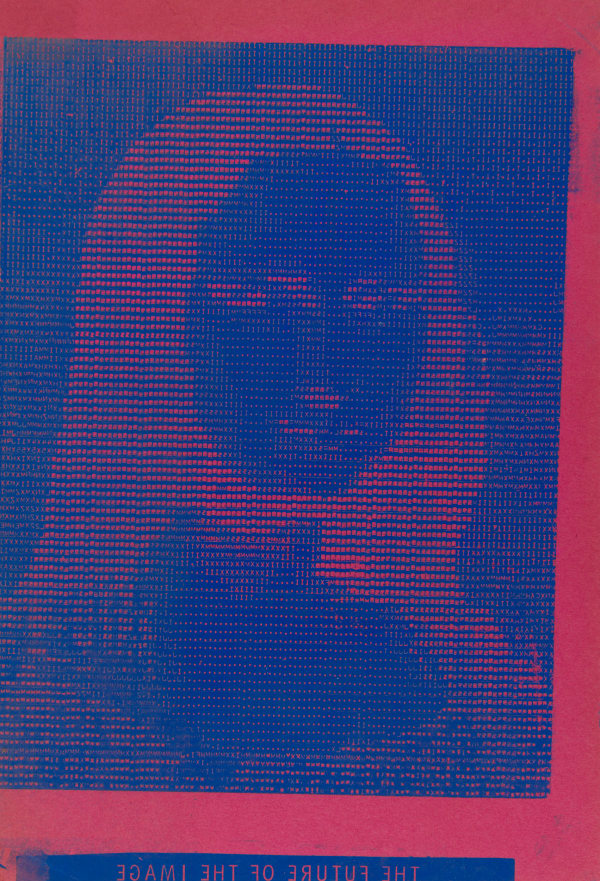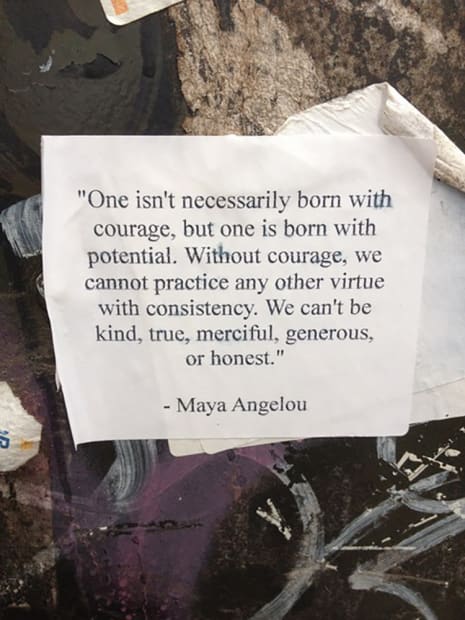SOFT NETWORK: Lynn Hershman Leeson, Shigeko Kubota, Gwen Smith, Sara VanDerBeek, Stan VanDerBeek, Lau Wai, Yelena Yemchu
-

-
-
-

-
Shigeko Kubota (1937–2015)
Personal Documentation of Fluxus Soho Tour, May 15, 1976
Black & White Video, 4:13 min.
Courtesy of the Shigeko Kubota Video Art Foundation
-
-
-

-
-
-
-
-
-
-
-
-
Chelsea: Chromophobia manifests itself in the many and varied attempts to purge color from culture, to devalue color, to diminish its significance, to deny its complexity. More specifically: this purging of color is usually accomplished in one of two ways. In the first, color is made out to be the property of some ‘foreign’ body — usually the feminine, the oriental, the primitive, the infantile, the vulgar, the queer or the pathological. In the second, color is relegated to the realm of the superficial, the supplementary, the inessential or the cosmetic.
--David Batchelor, Chromophobia (2000) in Kate Kraczon, “A Spiral Rather Than a Line: Ree Morton’s Artistic Cosmology,” in The Plant That Heals May Also Poison (2019) -
-
-
-
-
-
-
-
-

-
-
-
-
Chelsea: Glitch is anti-body, resisting the body as a coercive social and cultural architecture. We use body to give form to something that has no form, that is abstract, cosmic. Philosopher Jean Luc-Nancy puts it perfectly: “Does anyone else in the world know anything like ‘the body’? It’s our old culture’s latest, most worked over, sifted, refined, dismantled and reconstructed product.” A lot of work is put into trying to give the body form.
-Legacy Russell, Glitch Feminism (2020) -Jean Luc-Nancy, “Corpus” in Corpus (2008)
-
-
-
-
-
Inspired to address the increasing isolation and disembodiment of contemporary life (accelerated and exacerbated by the global pandemic), and to support and engage with their artistic communities, Sara VanDerBeek and Chelsea Spengemann co-founded soft network, an experimental cooperative. For their first project, soft network presents a collaborative conversation and exhibition soft network, jointly hosted by Altman Siegel in an Online Viewing Room and by Rachel Comey on her website and in her New York showroom.
For the exhibition, soft network, VanDerBeek and Spengemann invited the participation of a group of artists and artist foundations in their existing network: Shigeko Kubota Video Art Foundation, Lynn Hershman Leeson, Gwen Smith, Sara VanDerBeek, Stan VanDerBeek Archive, Lau Wai, and Yelena Yemchuk. Contributions include streaming digital videos, prints made from paintings made from photographic portraits found online, paintings on photographs, 3D printed figures, early computer- generated imagery and collage.
At the center of this presentation, Sara VanDerBeek introduces a new series entitled, Ancient Woman 2022, in which she incorporates gestural layers of paint and eye shadow onto the surface of her photographs for the first time. She began photographing Roman statuary in 2012 with a residency in Rome at Fondazione Memmo, and continues to work with ancient female figures as an evolving and expanding archive. Returning to images of a sculpture of Aphrodite from the National Archeological Museum in Naples as well as other images of the female form from various international collections, VanDerBeek captures, colorizes and renders these ancient women into new composites of image and action. This act of reclamation and of reverence is meant as both a disruption and a reframing to encourage new perspectives on the past and the present.
In addition to their artworks, participants were invited to contribute text and images exploring themes of networked bodies, image networks, and re-surfacing histories. Assembled by soft network and included throughout the soft network Online Viewing Room, this combinatory conversation reflects an interest in experimenting with existing presentation platforms to encourage connectivity.
Rachel Comey, an established designer and friend of soft network who has successfully pushed against conventions in the fashion business, will host parallel platforms for soft network’s projects on her website and in her NYC store. By engaging multiple platforms, soft network aims to respond flexibly to economic challenges in the arts, creating opportunities for connectivity beyond conventional art spaces, while expanding audiences for all participants. Including multiple platforms, open forum discussion, a responsive range of items for sale and a dynamic, intergenerational group of makers are all gestures that soft network plans to continue with in future projects.
A workshop conversation Reclaiming Network will be presented as part of the programming.
Conversation Participants:
Rachel Comey, Fashion Designer
Gwen Smith, Artist
Chelsea Spengemann, Director, Stan VanDerBeek Archive
Sara VanDerBeek, Artist
Yelena Yemchuk, Artist
Moderated by Claudia Altman-Siegel
Altman Siegel and soft network, a cooperative platform for collective arts programming, are pleased to present Reclaiming Network, a public, open forum discussion in which the project’s ideas will be workshopped and discussed as part of a meditation on the significance of collectivity.
The content that each artist has contributed to the Altman Siegel online viewing room as well on Rachel Comey’s website and in her NYC store this coming February will be introduced by each participant.
The group will also workshop new methods of activating online spaces and marketplaces as a means of addressing shifting concerns of cultural production and survival during this transformational time. -
soft network: Reclaiming Network
Friday, January 29, 2021 -
About soft network
soft network is a cooperative platform established by Chelsea Spengemann and Sara VanDerBeek for connective arts programming. We work between past and present to explore ways in which the archive and archival interactions can become integral modes of exchange, collaboration, creativity and commerce. soft network’s mission is to provide opportunities for living artists and the representatives of non-living artists to support each other through sharing resources, labor and profits by generating new projects in collaboration with existing platforms.
Rachel Comey, an established designer and friend of soft network who has successfully pushed against conventions in the fashion business, will host parallel platforms for soft network’s projects on her website and in her NYC store. Engaging multiple platforms will provide a range of contexts in which soft network hopes to respond flexibly to economic challenges in the arts, as well as create opportunities for connectivity beyond conventional art spaces, and in turn expanding audiences for all participants.
-
Lynn Hershman Leeson
Lynn Hershman Leeson (b. 1941, Cleveland, OH) lives and works in San Francisco and New York. Recent solo exhibitions have been held at Centro de Arte Dos de Mayo Comunidad de Madrid (2019); KW Institute for Contemporary Art, Berlin (2018); Haus der elektronischen Künste, Basel (2018); Modern Art Oxford, UK (2015); San Francisco Museum of Modern Art (2013), and the Whitworth Art Gallery, Manchester (2007). Her work has been included in group exhibitions at the de Young Museum, San Francisco (2020); The Shed, New York (2019); Walker Art Center, Minneapolis (2019); Institute of Contemporary Art Boston (2018); Whitney Museum of American Art (2017); and Whitechapel Gallery, London (2016); as well as international exhibitions, including the Riga Biennial of Contemporary Art (2018), and the forthcoming 2020 Gwangju Biennial in Korea.
Her films – Electronic Diaries 1984-2019, Strange Culture, Teknolust, Conceiving Ada, !Women Art Revolution: A Secret History, and Tania Libre are all in worldwide distribution and have screened the Sundance Film Festival, Toronto Film Festival, and the Berlin International Film Festival, among others. Hershman Leeson has received numerous awards, including the award of distinction at Ars Electronica (2020), a VIA Art Fund Award (2019), a Siggraph Lifetime Achievement Award (2018), the College Art Association’s Distinguished Feminist Award (2018), the Golden Gate Persistence of Vision Award from the 60th San Francisco International Film Festival (2017), a United States Artists Fellowship (2016), an Anonymous Was a Woman Award (2014), a John Simon Guggenheim Memorial Foundation Fellowship (2009) and the Prix Ars Electronica Golden Nica (1999).
Shigeko Kubota
Born in 1937 in Niigata, Japan, in 1964 Kubota moved to New York, immediately entering the downtown art scene at the invitation of artist George Maciunas, the Founder of Fluxus Art Movement. She lived and worked in SoHo, New York City until she died in 2015. An active participant in the international Fluxusart movement in the 1960s, Kubota was strongly influenced by the art and theories of Marcel Duchamp and John Cage. Focusing on several, often interconnected themes, her wide ranging art works include:
Video Sculptures that pay direct homage to Duchampian ideas and icons (Meta-Marcel and Duchampiana series, including the work Nude Descending a Staircase, 1976); And Video Displays and Installations that reference Japanese spiritual traditions of nature and landscape, particularly water and mountains (River, 1981, Niagara Falls, 1985); Her work also includes an ongoing, deeply personal narrative group of pieces called Video Diary, presenting subjective documentary style chronicling of her personal life on video (Broken Diary, 1970- present). Shigeko Kubota brought a singular sensibility to her extensive body of video sculptures, multi-media installations, and single-channel videos. Throughout her career, Kubota forged a lyrical union of the personal and the technological, often merging vibrant electronic processing techniques with images and objects of nature, art and everyday life. Kubota merges her signature electronic processing with art historical and cultural references and a strong sense of female identity. The later installments of her video diary often focused on her relationship with her late husband, artist Nam June Paik.
Gwen Smith
Born in 1968, Smith majored in Film History, Photography and Environmental Design Theory at the University of Colorado Boulder. She moved to New York in 1991. Her first job was as an assistant to Lorna Simpson. Smith studied at ICP with Jules Allen and in 1993, began a 15 year career as a photography research editor for Colors (1992-1993), Details Magazine (1993-1995), Vogue Magazine (1995-1997), The New Yorker (1998-2003), and HBO’s The Black List Vol 1, 2 &3 (2008-2010). In 2004 she became a mother to her son River and began amassing an archive of her iPhone photographs of found language called The Message. In 2018 Smith began a ritual for creativity which became a collection of 100 paintings and selfies called The Black Woman Project. Vol. 1 and 2 were published simultaneously in late 2020. The Black Woman Project Vol. 3 currently in production for spring of 2021. Smith has published 2 books with onestar press: Tropic, (2001) and Cancer (2006) and Edgy with their subsidiary Book Machine (2015). Smith has been in numerous groups shows including 1999 Greater New York, Ps1MoMA; Playtime at Peabody Essex Museum; A Page from my Intimate Journal Pt. 1 at Gordon Robichaux NY; Of a Fire on the Moon at Lia Rumma Naples; Dot, Point, Period at Castelli NY; Who Knows One at Vistamare Pescara; as well as in her partner Haim Steinbach’s exhibitions since 1993.
Chelsea Spengemann
Chelsea Spengemann is the director of the Stan VanDerBeek Archive and has worked with the VanDerBeek family since 2008 helping them manage their father’s multimedia artist estate. As director of the Archive, Spengemann has overseen installations and acquisitions of VanDerBeek’s work at the Museum of Modern Art, NY; Whitney Museum of American Art, NY and the Walker Art Center, MN, among other international venues, while steadily working through restorations of numerous VanDerBeek films. In 2019 Spengemann co-curated VanDerBeek + VanDerBeek at the Black Mountain College Museum + Arts Center, NC and co-founded a group of artist estate leaders called AFELL (Artist Foundation and Estate Leaders List). She was the curator for Becoming Disfarmer in 2014 and the Instant as Image in 2016 for the Neuberger Museum of Art at SUNY Purchase and FLOAT at Socrates Sculpture Park in 2009. Her writing has appeared in Afterimage, Affidavit and Art Journal Open. An essay on Meg Lipke for Burlington City Arts is forthcoming. She has an MA in Art History from Purchase College and an MFA in Photography from ICP/Bard College.
Sara VanDerBeek
Sara VanDerBeek (born 1976) lives and works in New York. VanDerBeek’s work has been the subject of solo exhibitions at the Minneapolis Institute of Art; Black Mountain College Museum and Art Center, Asheville, North Carolina (with Stan VanDerBeek); the Baltimore Museum of Art; Museum Boijmans van Beuningen, Rotterdam; the Museum of Contemporary Art, Cleveland; the Hammer Museum, Los Angeles; the Whitney Museum of American Art, New York; Fondazione Memmo, Rome; Metro Pictures, New York; and the Approach, London. Her work was included in the inaugural New Visions Triennial for Photography and New Media at the Henie Onstad Art Center, Høvikodden, Norway (2020). Recent group exhibitions include the Zabludowicz Collection, London; The Institute of Contemporary Art, Boston; Pier 24 Photography, San Francisco; Sprüth Magers, Berlin; Gagosian Gallery, Rome; Kunsthalle Berlin; and the Solomon R. Guggenheim Museum, New York.
Stan VanDerBeek
Stan VanDerBeek (1927-1984) was a prolific multimedia artist known for his pioneering work in experimental film and art and technology. Born in Bronx, NY, he studied at The Cooper Union for the Advancement of Science and Art, New York (1948-1952), and Black Mountain College, Asheville, NC (1949-1951). During his lifetime he was the recipient of numerous grants and awards. Various projects included the construction of Movie-Drome an audio-visual laboratory for simultaneous projection, at Gate Hill Co-op, Stony Point, NY (1964-1966); Violence Sonata, a live theatre event for two television channels produced as an artist-in-residence at WGBH, Boston MA (1969-1970); Panels for the Walls of the World, a fax mural made as one of the first artist-in-residence at MIT’s Center For Advanced Visual Studies, Cambridge, MA (1969-1970); and Steam Screens, projections onto Joan Brigham steam installation, Whitney Museum of American Art, New York, NY (1979). VanDerBeek’s filmography includes over one hundred experimental and innovative 16mm and 35mm films and videos in black and white and color spanning collage, animation, computer graphics, live action, performance documentation, found footage, and newsreels. Recent exhibitions that have featured VanDerBeek's work include Stan VanDerBeek: The Culture Intercom at the MIT List Visual Arts Center, Cambridge, Massachusetts, and at Contemporary Arts Museum Houston (2011); the 55th Venice Biennale (2013); Leap Before You Look: Black Mountain College, 1933-1957 at the Institute of Contemporary Art, Boston (2015); Dreamlands: Immersive Cinema and Art, 1905-2016 at the Whitney Museum of American Art, New York (2016); Merce Cunningham: Common Time at the Walker Art Center, Minneapolis (2017); Judson Dance Theater: The Work is Never Done at the Museum of Modern Art, New York (2018).
Lau Wai
Born in Hong Kong, Wai currently lives and works in Hong Kong and New York. Her work utilizes photography, video, drawing and installation exploring the multilateral constructions of identity in relation to race, gender and the notion of belonging. She attempts to investigate how history, fiction, personal memory and virtuality collided in the process of identity formation through personal and historical archives, cinematic imagery, popular culture and digital media.
She has exhibited in Europe, Asia, and the United States, including Kunstmuseum Brandts, Denmark (2016) ; Power Station of Art, Shanghai (2018) ; Para Site Art Space, Hong Kong (2015, 2018); Tai Kwun Contemporary, Hong Kong (2019); Kuandu Biennale, Taiwan (2018); Echigo-Tsumari Art Triennale, Japan (2015) ; The Museum of Fine Arts, Houston, United States (2019) and Yokohama Triennale, Japan (2020). Her works are in the permanent collections at M+ Museum (Hong Kong); The Museum of Fine Arts, Houston (United States); and Alexander Tutsek – Stiftung Foundation (Germany), amongst others.
Yelena Yemchuk
Yelena Yemchuk's output as a visual artist is immediately recognizable, regardless of medium. Born in Kyiv, Ukraine, Yelena Yemchuk immigrated to the United States with her parents when she was eleven. She became interested in photography when her father gave her a 35 mm Minolta camera for her fourteenth birthday, and went on to study at Parsons in New York and the Art Center in Pasadena. Recognized for her surrealistic whimsy and dark romanticism, Yemchuk has exhibited paintings and photographs in museums and galleries worldwide. She has shot for the New Yorker, Another Magazine, ID, Dazed & Confused, and Italian, British and Japanese Vogue. Yemchuk released her first book Gidropark, published by Damiani in April 2011, followed by Anna, published by United Vagabonds in 2017. In 2019, Yemchuk had her first institutional debut with her project Mabel, Betty, & Bette, a photography and video work at the Dallas Contemporary Museum. A monograph of the same title will be released by Kominek Books in February 2021. She is currently working on a new collection of photos, ODESSA.
-
For more information please contact Altman Siegel at info@altmansiegel.com.



